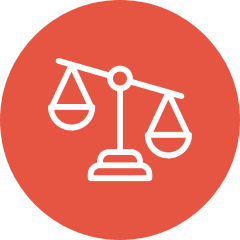Data-driven strategy: Get more out of your solution
Are you toying with an idea for a digital concept, or do you already have a solution in use? We would like to help you get more out of your concept or solution with a data-driven strategy. A strategy in which we work towards concrete objectives and measurable results, supported by statistics.
On this page you can read more about how we apply data-driven insights to generate more downloads, increase turnover and make users happy. Would you like to receive tailored advice for your solution? Joost is happy to talk further with you.
We are happy to help you with a consultation

A data-driven strategy helps you to:

Make goals concrete and measurable

Discover the actionable insights within your solution

Make substantiated choices based on concrete figures

Get the most out of your development budget
Data-driven: decision-making with certainty
With a 'data-driven' working method, we put facts and figures at the core of decision-making, ensuring that resources are used where they are most valuable. This way, we prevent assumptions and handle the available budgets with care.
As a concrete example: the objective may be that users who download an app as much as possible turn to purchasing a subscription. There are a number of steps between the download and the purchase of a subscription. This series of steps is also called a 'funnel'. By carefully mapping all the steps in the funnel and storing the relevant user actions, we can see exactly where optimizations will help us to get more users to make a payment.
First screen
from the app
1000
User selects
a language
950
950
User enters
a name
826
826
User registers
an account
335
335
User buys
a subscription
163
163
An example of a funnel: flow from onboarding to payment screen.
In the funnel above we see that 57% of users drop out at step 4: registering an account. This insight shows that we can now get the most results (or subscription sales) by focusing on improving account registration so that more users end up at the payment screen (step 5).
How data drives our work
The following pillars are central to our data-driven approach:

01

What are we working towards?
Together we look at the set goals and ambitions within your solution. What do we want to achieve? What value do we want to provide, and what are the needs of users and stakeholders? We help you ask the right questions, so we can focus on the points that are actually important.

02

What does success look like?
An objective is only of value when we can concretely say that the goal has been achieved. Or hasn’t been achieved, yet.
We do this by formulating objectives in measurable terms. For example:
Revenue: a user must generate an average of €1.50 in their first two months Organic growth: a user must invite an average of 1.2 new users Retention: of 100 users on day 1, 30 active users should remain on day 7 Marketing: the app revenue should cover 50% of marketing expenses
By making the goals measurable, we provide our data-driven strategy with additional guidance. A concrete insight into where we stand and how far we still have to go. This also enables us to make adjustments in the meantime: a target may have been too ambitious, or not ambitious enough.

03

Where are we now?
A familiar saying is, 'To measure is to know'. But what exactly do we measure?
We inspect where users come from, what behavior they show in the solution and what results this leads to. - How often is the payment screen visited, and how often is the payment button pressed? Does this happen more often if this button is green instead of red? - By capturing users' actions, we accurately map out effective optimizations.
We ensure that the right insights are collected and provide substantiated advice for the next steps.
04
What's our next goal?
We always see potential to make processes even better, more efficient and easier. When we have achieved a goal, we look for the next milestones together.
This makes our data-driven way of working an ongoing process, where each step provides a better idea of the numbers, the solution and the users' needs.

Meet with our digital experts

Full service.
For all things digital.

Concept, design, strategy, development, maintenance, growth.We do it all, with one team in the center of Amsterdam.In consultation, we tailor our digital services to the needs and wishes of our clients.Please feel free to contact us for a customized consultation. We are happy to help you digitally advance.


Meet with our digital experts
